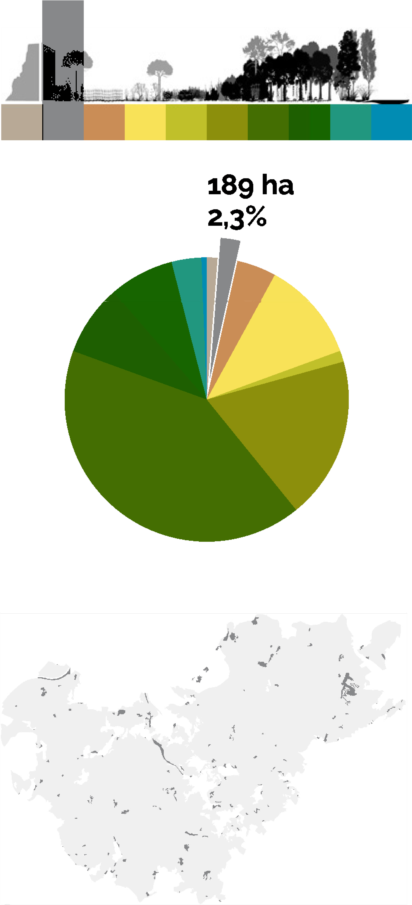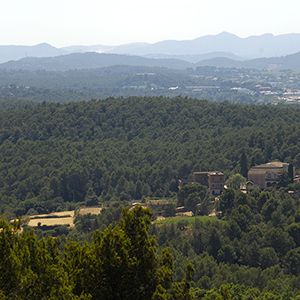The beginning of the 20th century saw initiation of a process in which forest land would become occupied by entire estates of summer residences. The extent of this activity has varied over time, not only with regard to objectives and architectural and planning content, but also in terms of conformity and eccentricity.
The result is a landscape randomly covered with made-up roads and scattered nuclei of buildings some of which, due to their importance and consolidation, have been definitively accepted by current urban planning. The central corridor of Collserola Park is without doubt the zone most affected by thoroughfare infrastructure and urban development.
The establishment of residential zones facilitates the introduction of non-native plant species, often originally imported as garden plants, which, little by little, have become naturalised. The black locust or false acacia (Robinia pseudoacacia) is one of the many trees that have successfully adapted to their new surroundings over the years, and now seems to have a stabilised population. Another, more worrying case is that of the ailanthus (Ailanthus altissima), a species introduced more recently which has a high reproductive capacity. Other alien tree species that can be found on Collserola are the paper mulberry (Broussonetia papyrifera), London plane (Platanus hispanica), sycamore or false plane-tree (Acer pseudoplatanus), Monterey pine (Pinus radiata), Himalayan cedar (Cedrus deodara) and the Monterey cypress (Cupressus macrocarpa).
The non-native shrubs most often seen are the mimosa or blue wattle (Acacia dealbata) and the cherry laurel (Prunus laurocerasus). Other species present in the Park are the giant reed (Arundo donax), white bladderflower (Araujia sericifera), century plant (Agave americana), prickly pear (Opuntia ficus-indica), jimsonweed(Datura stramonium), Bathurst burr (Xanthium spinosum), Jerusalem artichoke or sunroot (Helianthus tuberosus) and the American pokeweed (Phytolacca americana).
A similar problem of growing numbers of foreign species associated with the increase in human-modified environments is also being detected in the Park’s fauna. These include the monk parakeet (Myopsitta monachus) and the Eurasian collared dove (Streptopelia decaocto) which, for the moment, are restricted to landscaped areas and urbanised zones. In contrast, the red-billed leiothrix or Japanese nightingale (Leiothrix lutea) is the only exotic species to have successfully colonised forest environments with a high degree of naturalness, or similarity to their original state.
Another issue associated with human-modified environments is the growth in species that have a commensal relationship with human activity: house sparrows (Passer domesticus), magpies (Pica pica) and rats (Rattus sp).







